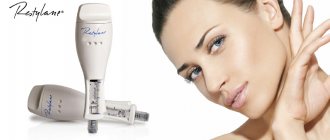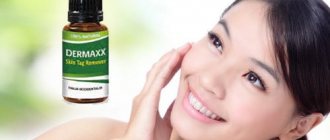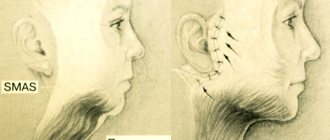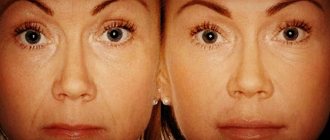Mechanism of action
To understand the essence of the technique and appreciate the scientific work done by thousands of specialists, you need to remember a little (and for some, discover) something from histology - the science of tissues. The fact is that 2 types of connective tissue are responsible for the elasticity and smoothness of our skin - collagen and elastin. The gaps between the fibers are filled with hyaluronic acid.
Over time, due to many external and internal factors, collagen and elastin fibers become less and less, or they are present in sufficient quantities, but their structure is disrupted. The amount of natural “cement” - hyaluronic acid - also decreases. Because of this, wrinkles appear on the skin, it becomes flabby and uneven.
With the help of bioreparation, it has become possible to restore the required volume of hyaluronic acid and even - drum roll - to launch the natural processes of internal regeneration of the skin. One session of this procedure is enough to improve the appearance of the skin, and if you decide to take the full course, you will delight your loved ones with your blooming appearance and a second youth. How is this possible?
During bioreparation, certain preparations containing hyaluronic acid, vitamins, proteins and amino acids are introduced using intradermal microinjections. This multicomponent nature makes it possible to create a depot of substances necessary for the skin in the treated area. But this is not the only advantage of the technique - the long-term presence of the drug components (more than 14 days) in the dermis triggers natural regeneration processes that continue to work after the “storehouses” are depleted.
Biorevitalization
Returning the skin to a young, virgin state and enhancing its tone and performance is possible with the help of an injection of a special substance - hyaluronic acid. It restores the chemical balance, creating an optimal environment for the functioning of dermal cells.
Fast and slow effects are distinguished. The first appears during the day after the procedure: the skin becomes smoother and wrinkles disappear.
Slow results are realized after a week: skin cells independently begin to produce hyaluronic acid, resulting in rejuvenation.
The procedure should not be confused with mesotherapy. The latter consists of the injection of microelements and vitamins, while biorevitalization is carried out by introducing only “hyaluronic acid”.
Indications
This technique can be used for the following problems:
- dry skin;
- fine wrinkles;
- unhealthy skin color;
- increased secretion of fat;
- rehabilitation after surgery.
Mechanical facial cleansing is one of the most popular procedures in cosmetology. Find out everything about her! You can find out the pros and cons of thread lifting, indications and contraindications for the procedure, and average prices for facial skin tightening here.
And what are the features of facial skin tightening after 50 years, and what threads are used, read here.
Contraindications
Contraindications to this technique are:
- pregnancy;
- inflammation in the intended injection area;
- elevated temperature;
- period of menstruation.
Distinctive properties
Possibilities of biorevitalization:
- Triggers a weakened mechanism for the functioning of skin cells.
- The procedure does not cause allergic reactions (hypoallergenic).
- Long lasting effect.
The method is applied to all parts of the body, not just the face. Neck, décolleté, arms – everything is subject to this method.
Kinds
The technique is implemented in two ways: injection and non-injection.
Injectable
The characteristics of the first type are as follows: the procedure is carried out in sessions with a total duration of no more than half an hour.
The actions performed consist of introducing hyaluronic acid with a thin needle into the area that needs to be given its former elasticity and firmness.
There are some disadvantages:
- The cosmetologist’s lack of experience (wrong injection, wrong amount, etc.) can cause complications.
- The procedure itself is painful: injections are made in susceptible areas.
- The appearance of the skin during the day after treatment leaves much to be desired.
Non-injection
This method is carried out using laser therapy. Painlessness and low risk of injury make this procedure particularly attractive. There is no need for skin care, as it maintains its integrity.
Not without its drawbacks:
- A large number of actions that must be performed to obtain a result.
- Due to the individual characteristics of the skin, there may be no pronounced effect.
Watch a video about the biorevitalization procedure:
Biorevitalization and bioreparation - is there a difference?
Bioreparation is the next stage in the evolution of biorevitalization. Both procedures are similar in the technique of implementation - microinjections of certain drugs into one of the skin layers. The key difference between the methods lies in the composition of the input agents and, accordingly, in their action.
Biorevitalizants contain only hyaluronic acid, which can be in a stabilized or unstabilized state. A relative disadvantage of such drugs is their short stay in the dermis - up to 72 hours. Therefore, the effect of biorevitalization does not last so long.
Bioreparants are complex preparations based on the same hyaluronic acid. But a significant addition to these products are peptides, vitamin complexes, and amino acids. Thanks to this multicomponent nature and special molecular structure, bioreparation preparations can remain in the skin for up to 3 weeks, creating a supply of nutrients and stimulating the synthesis of new collagen fibers.
One such drug is Hyalrepair. Its uniqueness lies in the solid-phase modification method, which made it possible to attach additional active substances to the hyaluronic acid molecule. Thanks to this degeneration, the Hyalripier molecule is not exposed to hyaluronidases, enzymes that break down hyaluronic acid.
While the drug is in the dermis (about 21 days), fibroblasts are stimulated - cells that are responsible for the synthesis of connective tissue fibers, including collagen. Additionally, Hyalripayer has a powerful antioxidant effect on all layers of the skin, increasing its protective properties and activating regeneration processes.
So what is better – bioreparation or biorevitalization
If you want to get a long-term effect, but you don’t have time to visit a beauty salon often, bioreparation is your choice. For those who decide for the first time to undergo intradermal injection of hyaluronic acid, it is better to focus on biorevitalization.
The patient underwent 3 bioreparation sessions
Frequently asked questions from patients
Since the procedure has not been carried out for very long, there is still a lot of uncertainty around it.
What is the difference between biorevitalization and bioreparation
Hyaluronic acid is also introduced into the skin during other injection procedures. But bioreparation is a more advanced way to improve its condition. The difference lies in the drugs and the characteristics of the effect, and therefore the final effect.
Mechanism of action of bioreparation
During biorevitalization, the main active ingredient is absorbed faster. And although the procedure also starts the rejuvenation process, it does not last long. Bioreparation involves the use of a special form of hyaluronic acid with additional molecules of active substances. The components do not react to the digestive enzymes present in the tissues and last much longer. Therefore, the rejuvenating effect of bioreparation is longer and more pronounced.
Additional procedures that will improve your skin
Another advantage of bioreparation is that it can be combined with other anti-aging manipulations:
- salicylic peeling;
- Botox injections;
- bioreinforcement.
Whether they are needed and what the scheme of use should be is decided by the doctor.
Which drug to choose
For bioreparation, taking into account the nature of skin problems, one of several means is used:
- "Gialripayer." There are three types of drugs in the line. “02” is used to smooth out wrinkles and eliminate scars. “04” will get rid of rosacea, pigmentation, and dull color. “08” will remove fat and sagging skin.
- Meso-Wharton. Improves blood circulation, relieves swelling and eliminates age-related folds.
- "Meso−Xanthin". It is indicated rather for young patients, as it prevents aging by stimulating the synthesis of dermal cells.
- "Teosyal". Tightens the skin, promoting rejuvenation processes, preventing the formation of free radicals.
- "Aquashine." It prevents the destruction of collagen fibers, stimulates their renewal, and prevents increased melanin production.
We recommend reading about the best drugs for biorevitalization. You will learn about such drugs as “IAL System”, “Aquashine”, “Repleri”, “Viscoderm”, “Revi”, “Princess Rich” and many others. And here is more information about how to care for your skin after biorevitalization.
Indications for use
List of indications:
- Dry skin, increased sensitivity.
- Ptosis is the drooping of one or another area of the face.
- Photoaging: the presence of dryness and hyperpigmentation, rosacea.
- Chronoaging: facial wrinkles, decreased tone and elasticity.
- Acne.
- Scars.
- The process of skin rehabilitation after aggressive rejuvenation techniques (use of laser, burns after various procedures).
- Flabbiness of the skin of the hands.
- Presence of cellulite.
- Stretch marks after sudden weight loss.
What is bioreparation? What effect can be expected from the procedure?
A procedure that promotes a long-term rejuvenation effect - bioreparation , is carried out with a preparation consisting of amino acids and peptides, vitamins and hyaluronic acid. It restores the optimal volume of hyaluronic acid, intensely stimulates the production of proteins, breaks down fats, helping to eliminate a double chin, and activates natural skin regeneration. The administered reparant has a wide spectrum of action with a prolonged effect.
Bioreparation helps correct facial contours, create a lifting effect, restore tone and improve complexion, strengthen the walls of blood vessels, and eliminate pigmentation. After the procedure, deep wrinkles are smoothed out and small ones disappear, the skin takes on an elastic and toned appearance with improved relief and color, dryness and flaking, hyperpigmentation and rosacea, etc. go away.
Stages
Stages of implementation:
- As mentioned above, skin bioreparation is the introduction of a certain drug into the dermal layer using injections. Injections are felt differently by each person: for one it is just an unpleasant manipulation, for another it is quite painful. To make bioreparation as comfortable as possible, an anesthetic cream or gel is applied to the problem area before it begins. The anesthetic is applied to the treated area at least 3 times, and the exposure is maintained for 25 minutes. Some salons use needles so thin that no anesthesia is administered.
- When the skin has lost sensitivity, it is disinfected with a 0.5% chlorhexidine solution and the administration of the drug begins. The face, neck, and décolleté are treated using the “papule” technology. The needle is inserted into the tissue with the cut up and at a minimal angle, the drug is injected until a papule measuring 1-2 mm is formed (in the eye area - no more than 1 mm). If bioreparation of the face is carried out, then injections are made along massage lines at a distance of 1 cm. The neck is treated in parallel along arcuate lines, the distance between punctures is 1.5 cm. The décolleté area is injected along V-shaped lines in “steps” of 2 cm.
- After bioreparation is completed, the affected area is lubricated with a special cream, which has a calming effect and enhances regeneration. Puncture marks disappear within a day. To make the effect of the procedure more pronounced and last as long as possible, cosmetologists recommend using cosmetics that have a lymphatic drainage and lipolytic effect.
To achieve the maximum effect from bioreparation, you must complete a course consisting of 3 sessions (1 session every 3 weeks). It is also recommended to carry out a maintenance procedure – once every two months.
Watch a video about bioreparation:
Injection cosmetic procedures
Just a few years ago, the main procedure to restore elasticity and smoothness to the skin was mesotherapy. Injections of mini-doses of special mesotherapy cocktails tone the surface layer of the dermis and improve the condition of subcutaneous fatty tissue. The main disadvantage of the procedure is the short duration of the result obtained. Thanks to the active activity of the lymphatic system, the components of the cocktails are removed from the tissues within several days, which means that the procedures need to be carried out in fairly large courses (up to 12 sessions), ideally once a week. After biorevitalization or bioreparation with hyaluronic compounds, which include Hyalripayer preparations, the skin remains fresh and tightened much longer, which means procedures can be done less frequently . The latter argument has led to a surge in popularity of relatively new procedures. Indeed, it is difficult to adhere to strict recommendations on the number of required sessions, especially if beauty care has to be combined with a busy work rhythm.
Questions and answers
- Question: What is more effective: bioreparation or biorevitalization? Answer: The bioreparation procedure has a more pronounced and lasting effect. This occurs due to the multicomponent structure of the biorepair molecule, as well as the specific modification of hyaluronic acid.
- Question: Which is better to choose: bioreparation or mesotherapy with hyaluronic acid? Answer: The fact is that both of these procedures have a similar end result - the delivery of hyaluronic acid to the skin. But mesotherapy uses liquid solutions that contain 0.5-1% hyaluronic acid. In this case, you will need a course of at least 6 sessions. For bioreparation, preparations with a hyaluronic acid concentration of 3% are used, the course duration is 3 sessions.
Cosmetologists recommend mesotherapy for young girls; ladies over 35 are better off opting for bioreparation, as the method activates recovery processes and gives a powerful impetus to launching their own and natural regeneration of the skin.
Read alternative procedures on our website:
- Bio-reinforcement of the face
- Contour plastic
- Mesothreads
- Plasmolifting
- Thread lift
Bioreparation
Injection cosmetology is rapidly developing, as evidenced by the emergence of another rejuvenation method. A new era of beauty begins with bioreparation.
The procedure is an attempt to force the skin to autonomously regenerate and rejuvenate.
The multicomponent composition of the drugs has a complex effect on tissues. The essence of the method is that the skin itself should begin to perform the functions given by nature.
Who needs
The indications are:
- age-related skin diseases;
- dry and dehydrated skin;
- prevention of photoaging;
- the presence of scars or similar deformations (can be eliminated with laser resurfacing).
When not to
When not to use:
- problems with immunity;
- presence of a tumor;
- diabetes;
- infection.
Indications and contraindications for Charcot's shower, what it is and how it helps get rid of cellulite - read everything in a separate article. Everything you need to know about APTOS facelift threads, their cost, reviews and rehabilitation after the procedure can be found in the article on our website.
We suggest you read about the principle of action of mesothreads, the duration of the effect and the benefits of thread lifting by clicking here.
Advantages
Possibilities of this technique:
- Creating conditions for autonomous tissue restoration.
- Increasing the immune effect of the skin.
- The complexity of bioremedies has a beneficial effect on the health of the skin.
- Efficiency and painlessness.
How is the procedure performed?
The session takes place in the following sequence:
- An anesthetic in the form of a gel or ointment is applied to the problem area.
- Carrying out disinfection using a chlorhexidine solution.
- Injection of a drug containing a mixture of hyaluronic acid, amino acids and vitamins using a thin needle.
- After the procedure, the affected area literally begins to come to life: the cells turn back time.
Result: young and beautiful skin.
The innovative nature of this technique has already received positive reviews from all well-known professional cosmetologists. Watch a video about the bioreparation procedure:
Biorevitalization or bioreparation: main differences
- Age. For people under 30 years of age, skin moisturizing, that is, microinjections of “pure” hyaluronic acid, is more suitable. We recommend that men and women over 30 years old prefer bioreparation (hydration + rejuvenation).
- Durability of the effect. After biorevitalization, your appearance will improve quickly - the transformation will happen in 1-2 days. The result of biorevitalization will be noticeable only after 2 weeks. This is how long it takes for the components of the drug to start the process of tissue rejuvenation. But the result of bioreparation is more durable. In addition, you will achieve it with fewer procedures.
Preparations used for bioreparation
For this technique, special compositions are used that provide intense hydration, restoration, eliminate wrinkles and pigmentation. They contain:
- Vitamin C to stimulate collagen production and increase antioxidant properties. This vitamin also has a brightening effect, making the complexion even.
- An amino acid complex, which also starts the process of collagen synthesis and provides protection from negative external factors.
- Riboflavin for better oxygen absorption.
- L-carnitine, correcting the contours of the face and body as a whole.
- Biological agents designed to slow down the processes that result in the destruction of hyaluronic acid. Moisturizes, providing lasting results.
Preparations for bioreparation are available in a wide range. Mezovarton is considered one of the most popular. It helps fight age-related changes without causing harm to health. The composition includes hyaluronic acid, peptides, vitamins and special molecules that activate biochemical reactions.
Another remedy is Meso-Xanthin. It is recommended for use by girls aged 25-35 years, as soon as the first signs of wilting appear. The composition contains seaweed, vitamins, peptides and other components.
Bio-expander is another product that has a complex effect. It restructures, rejuvenates, moisturizes and also provides a volumetric effect. The latter means giving the same volume to tissues that lose it with age. This drug is environmentally friendly. It is non-toxic, and therefore suitable even for women prone to allergic reactions.
For eco-rejuvenation of the skin, the Ial-System Duo complex is also used. It is suitable for correcting the contour of lips, cheeks, cheekbones. It is easily tolerated and without side effects. It is considered one of the most effective.
SKIN-B is used to improve the biological functions of the skin. As a result, fine wrinkles disappear. Another advantage of its use is the disappearance of bags around the eyes. Such injections are given in a course. The quantity is determined by a specialist depending on the initial condition. As a rule, the frequency of the procedure is 1 time every 7 days. Most often, 3 sessions are required for complete recovery.
SKIN OX is used for dehydration. It restores elasticity and firmness. Indicated when age-related changes occur. Suitable for eliminating pigmentation.
Gialripayer-08 is a remedy that is used for gravitational ptosis and fat deposition. It contains ascorbic acid, as well as carnitine, which has a lipolytic effect. With its help, it is possible to eliminate flabbiness.
Contraindications
Before carrying out bioreparation, you need to familiarize yourself with the list of contraindications so as not to harm the body. The procedure is not carried out if:
- oncology;
- herpes;
- epilepsy;
- pregnancy;
- tendency to form scars;
- autoimmune diseases;
- flu, colds;
- blood diseases;
- elevated body temperature;
- infectious diseases of the dermis.
Indications
Bioreparation is indicated for people in the older age category. The procedure helps if the skin is depleted and has lost its ability to regenerate. It allows you to eliminate several problems at once. In this case, there is no need to make frequent visits to the cosmetologist. Main indications:
- wrinkles;
- consequences of acne;
- ptosis in the area of the chin, cheeks;
- hyperpigmentation;
- atrophic scars;
- hyperkeratosis;
- dryness, sagging skin;
- photoaging;
- cellulite, stretch marks;
- recovery after laser procedures.











